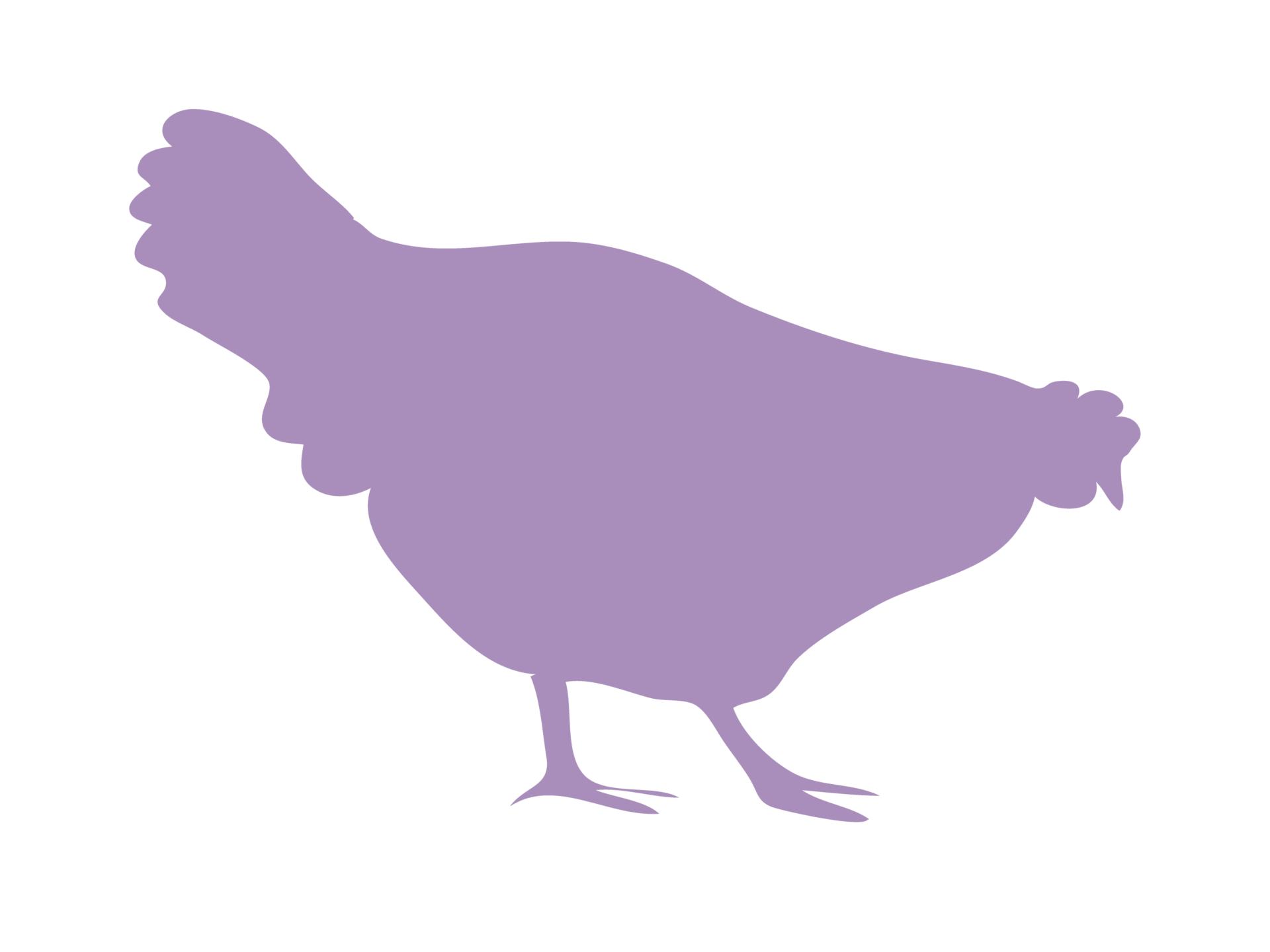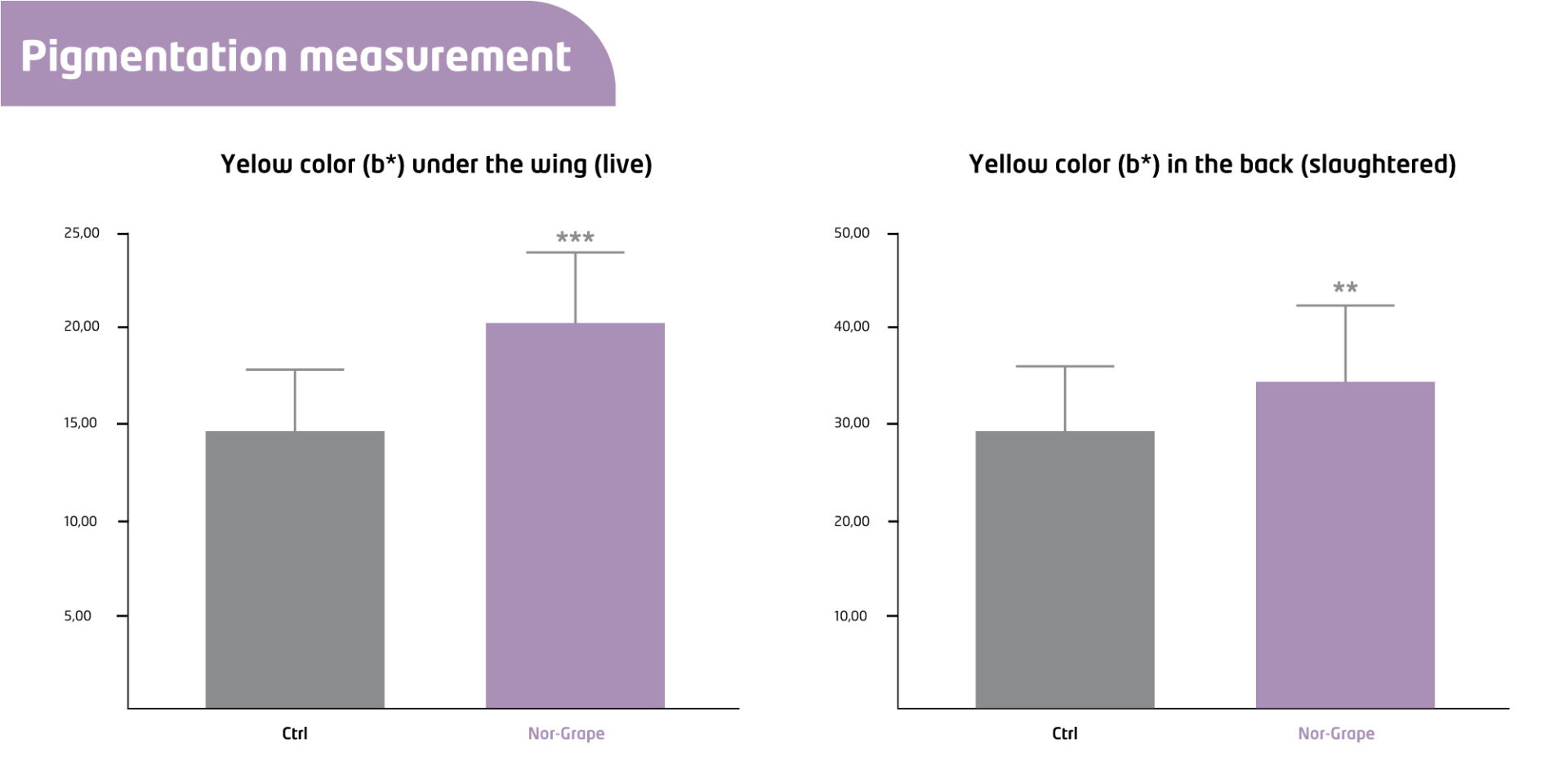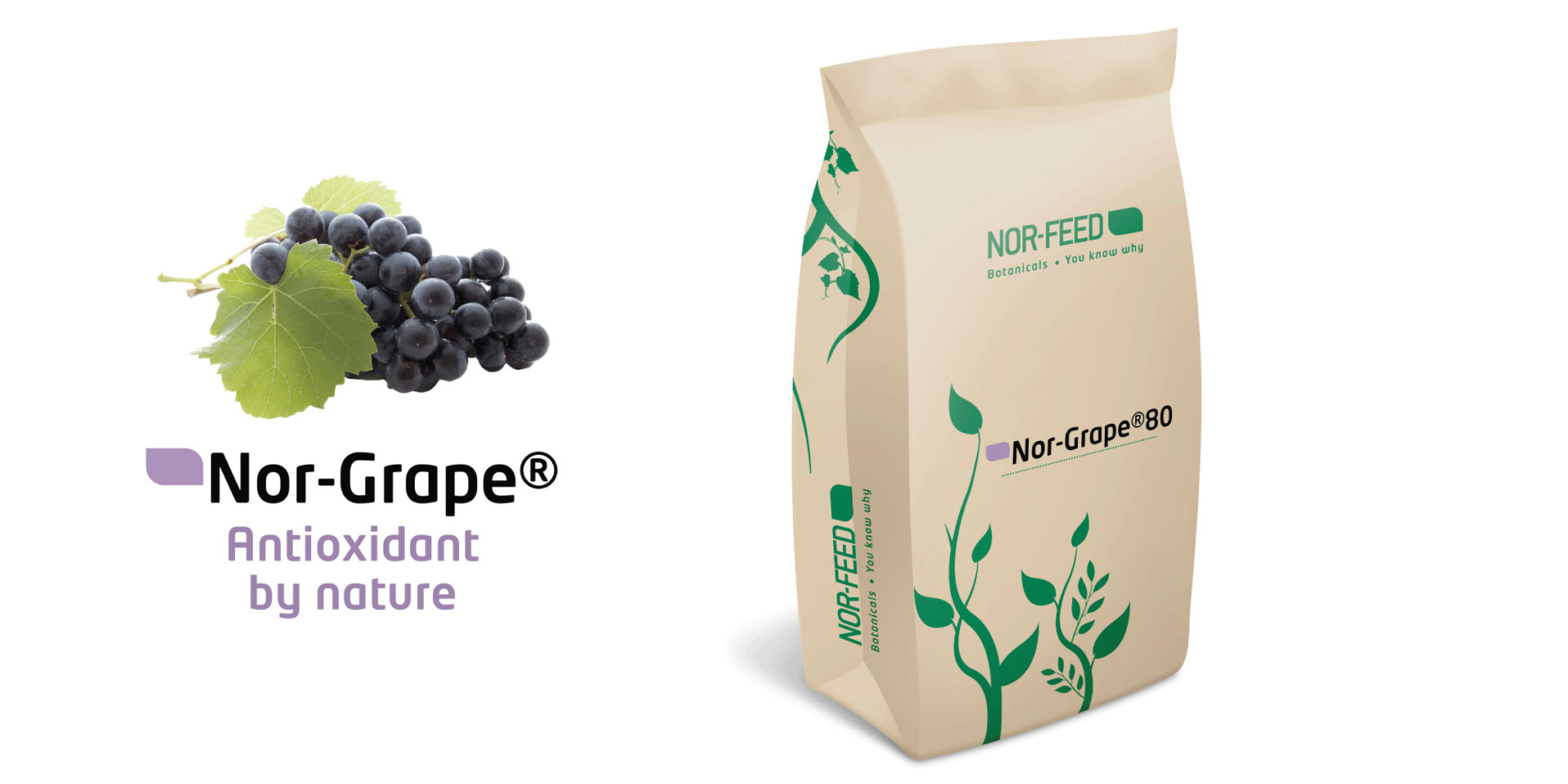Pigmentation

Pigmentation has always been identified as being a quality indicator for chicken products worldwide. If we look at broilers, their yellow skin is traditionally associated to a free range and a corn feed diet. While in laying hens,the yellowness intensity of egg yolk is associated to its nutrients‘ richness. In modern farming, growth performances and new rearing models have improved in such a way that it is impossible to reach a good quality pigmentation as we used to know with traditional farming.
To satisfy customers’ demand, feed is enriched with a combination of yellow and red pigments to boost color of the final products. Color intensity is scored through some pigmentation scale such as the DSM Yolk Colour Fan which gives a single value or the Minolta chromameter which gives 3 values (bright-ness (L*), the redness (a*) and yellowness (b*)).
Moreover, depending on producer’s specifications, different sources of pigments can be used with different dosages. These are split in 2 categories:
- Natural pigments: The marigold extract, rich in lutein and zeaxanthin, provides the yellowness. Paprika gives a natural red pigmentation.
- Synthetic pigments: Some apo-carotene esters allow the substitution of lutein and zeaxanthin present in some botanicals, while canthaxanthin is well known for its great efficacy to deepen red color. Depending on productions and countries, synthetic pigments’ ingestion level may be regulated.
Pigmentation quality can be affected by gut absorption or oxidative stress. The efficiency is then very uneven. That is one of the reasons we often observe color heterogeneity in a flock.
Impact of the oxidative stress
At bird physiological level, it is possible to measure the intensity of the oxidative stress. It is defined by the unbalance between free radicals (unstable and harmful molecules naturally produced), and the antioxidant defenses. In other words, when bird’s metabolism is highly solicited due to environmental conditions or health issues, the free radicals might overpass the antioxidant defenses, which leads to cells’ oxidative damages and also has an impact on immunity and growth.
All pigments used in animal nutrition have antioxidant values and have been classified as antioxidant nutrients (Sies and Stahl, 1995). Consequently, pigments are partially used to protect cells when animals are facing oxidative stress.
When birds grow under high temperatures, we often observe heterogeneity among the yellow skin shades. Variation of colors is very much impacted.
Standardized grape polyphenols
We know today that oxidative stress may be compensated through nutrition. Commonly, feed millers introduce vitamin E, or organic selenium to enrich feed. Vitamin C can also be supplied through the water. Antioxidant defenses are organized at different levels, depending on their biological properties and activities. And betting on a single source of antioxidant does not guarantee a complete protection. The best way to provide a good antioxidant cover is and has always been the diversification of the antioxidant sources.
Since 2007, Nor-Feed provides a standardized grape extract based on the selection of grape skin and grape seed extracts. Nor-Grape is recognized for its strong physiological antioxidant activity; 1 gram of Nor-Grape is equivalent to 22 grams of vitamin E50 in terms of efficiency.
Recent trials conducted in Latin America have evidenced the benefits of using Nor-Grape in feed supplemented with pigments.
We compared a couple of houses containing 20 000 birds each. The control flock received the standard feed including a pigments blend (4ppm of canthaxanthin + 12ppm of xanthophyles), whereas the treated group received an identical diet supplemented with Nor-Grape.

Pigmentation was measured with a Minolta chromameter and showed a greater intensity of yellowness on live birds (under the wing), but also on warm carcass (in the back) after slaughtering.

These results confirm the great efficiency in supplementing feed with Nor-Grape. Other trials have been conducted in laying hens and reveal similar results improving the redness in egg yolk.
Learn more about this product

